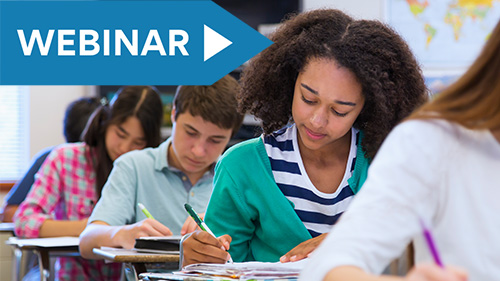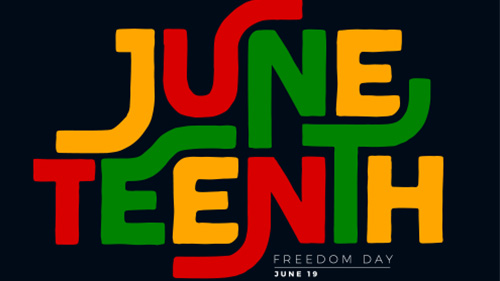Interview with a Character (ELA Activity)
There are so many more interesting methods to writing a character analysis than writing an analysis paragraph. Oftentimes, English or language arts...
AP & Honors Mathematics
Explore Wiley titles to support both AP and Honors mathematics instruction.
Literacy Skills & Intensive Reading
Connections: Reading – Grades 6–12
Empower student success with a proven intensive reading program that develops strong reading skills in striving readers.
Drama, Speech & Debate
Basic Drama Projects 10th Edition
Build students’ confidence and competence with comprehensive, project-based theatre instruction.
Literature
Connections: Literature
Support learners as they study dynamic, relevant texts and bring the richness of diverse voices to students through literature.
Literature & Thought
Develop critical thinking, reading, and writing across literacy themes, genres, historical eras, and current events.
Language Arts
Vocabu-Lit® – Grades 6–12
Help students build word power using high-quality contemporary and classic literature, nonfiction, essays, and more.
Connections: Writing & Language
Help students develop grammar, usage, mechanics, vocabulary, spelling, and writing and editing skills.
Reading/English Language Arts
Measuring Up to the English Language Arts Standards
Incorporate standards-driven teaching strategies to complement your ELA curriculum.
English Language Learners
Measuring Up for English Language Learners
Incorporate research-based best practices for ELLs with an approach that includes a focus on language acquisition strategies.
Mathematics
Measuring Up to the Mathematics Standards
Incorporate standards-driven teaching strategies to complement your mathematics curriculum.
Foundations
Measuring Up Foundations
Help students master foundational math skills that are critical for students to find academic success.
Science
Measuring Up to the Next Generation Science Standards
Give students comprehensive NGSS coverage while targeting instruction and providing rigorous standards practice.
Assessment
Measuring Up Live
Deliver innovative assessment and practice technology designed to offer data-driven instructional support.
For a better website experience, please confirm you are in:
We’ve heard of Project-Based Learning (PBLs), which allows students to mostly have independent leadership through a task or project and creative freedom to add their personal touches. Student-led classes have a very similar approach in that it’s led mostly by the student leaders elected and they create the lessons, plan, and timeline of the class’s tasks.
For example, I advise (not teach) Yearbook and Newsmagazine at my high school. I have been doing this for the past 10+ years and am inspired each year by the student editors taking the reins and finding success or lessons learned through their process of leadership. Nothing is ever going to be perfect, but through different situations and scenarios, students work together to find solutions to dilemmas and setbacks. Resiliency has always been a teen trait, but in student-led classes it is really something to observe.
As I mentioned, my role in these types of classes changes from teacher to adviser. I advise, I don’t teach. I advise, I don’t lead. I joke with the students that I’m there to pay the bills and make sure we don’t do anything illegal in our publications. But I also step in when editors aren’t having success with a student who won’t get their work done, has a grading question, or whose behavior gets disruptive or beyond student responsibilities.
Here are my tips to get more student-led learning happening in your classroom.

There are so many more interesting methods to writing a character analysis than writing an analysis paragraph. Oftentimes, English or language arts...

Several years ago, I began using a 4-point Student Engagement rubric for assignments that were either early in the knowledge acquisition period or...

Okay, real talk without judgement: How often do you arrive at school in the morning only to second-guess your Middle School ELA class routines? You...

As a public educator, one of the most vital things that I try to get my students to understand is how all the information they learn works together...

Most of the time, grading a stack of essays feels like shoveling a pile of smoke for the weekend. Not only are traditional grading methods time...

One of the key shifts in English Language Arts classrooms is the move for students to engage routinely with complex text. To prepare students for the...

Students' favorite streaming services, movies, and video games are all packed with compelling storytelling. To get them more excited about reading, I...

The wonderful thing about Social Emotional Learning (SEL) is it isn’t content-specific; it can span all curriculum and grade levels. Knowing the five...

Most of the time, grading a stack of essays feels like shoveling a pile of smoke for the weekend. Not only are traditional grading methods...

With so much heated debate over the concept of teaching to the test, it almost seems counterintuitive to ask teachers to assess their students even...

Laura Kebart (English Language Arts Teachers) shares strategies for 6-8 ELA teachers for creating rubrics that center student improvement. {%...

Explore engaging and interactive Juneteenth lesson plans designed for secondary education students to deepen their understanding of this important...

